Lazaros Nalpantidis
ClustViT: Clustering-based Token Merging for Semantic Segmentation
Oct 02, 2025Abstract:Vision Transformers can achieve high accuracy and strong generalization across various contexts, but their practical applicability on real-world robotic systems is limited due to their quadratic attention complexity. Recent works have focused on dynamically merging tokens according to the image complexity. Token merging works well for classification but is less suited to dense prediction. We propose ClustViT, where we expand upon the Vision Transformer (ViT) backbone and address semantic segmentation. Within our architecture, a trainable Cluster module merges similar tokens along the network guided by pseudo-clusters from segmentation masks. Subsequently, a Regenerator module restores fine details for downstream heads. Our approach achieves up to 2.18x fewer GFLOPs and 1.64x faster inference on three different datasets, with comparable segmentation accuracy. Our code and models will be made publicly available.
A Survey on Dynamic Neural Networks: from Computer Vision to Multi-modal Sensor Fusion
Jan 13, 2025Abstract:Model compression is essential in the deployment of large Computer Vision models on embedded devices. However, static optimization techniques (e.g. pruning, quantization, etc.) neglect the fact that different inputs have different complexities, thus requiring different amount of computations. Dynamic Neural Networks allow to condition the number of computations to the specific input. The current literature on the topic is very extensive and fragmented. We present a comprehensive survey that synthesizes and unifies existing Dynamic Neural Networks research in the context of Computer Vision. Additionally, we provide a logical taxonomy based on which component of the network is adaptive: the output, the computation graph or the input. Furthermore, we argue that Dynamic Neural Networks are particularly beneficial in the context of Sensor Fusion for better adaptivity, noise reduction and information prioritization. We present preliminary works in this direction.
From Web Data to Real Fields: Low-Cost Unsupervised Domain Adaptation for Agricultural Robots
Oct 31, 2024Abstract:In precision agriculture, vision models often struggle with new, unseen fields where crops and weeds have been influenced by external factors, resulting in compositions and appearances that differ from the learned distribution. This paper aims to adapt to specific fields at low cost using Unsupervised Domain Adaptation (UDA). We explore a novel domain shift from a diverse, large pool of internet-sourced data to a small set of data collected by a robot at specific locations, minimizing the need for extensive on-field data collection. Additionally, we introduce a novel module -- the Multi-level Attention-based Adversarial Discriminator (MAAD) -- which can be integrated at the feature extractor level of any detection model. In this study, we incorporate MAAD with CenterNet to simultaneously detect leaf, stem, and vein instances. Our results show significant performance improvements in the unlabeled target domain compared to baseline models, with a 7.5% increase in object detection accuracy and a 5.1% improvement in keypoint detection.
SteeredMarigold: Steering Diffusion Towards Depth Completion of Largely Incomplete Depth Maps
Sep 16, 2024Abstract:Even if the depth maps captured by RGB-D sensors deployed in real environments are often characterized by large areas missing valid depth measurements, the vast majority of depth completion methods still assumes depth values covering all areas of the scene. To address this limitation, we introduce SteeredMarigold, a training-free, zero-shot depth completion method capable of producing metric dense depth, even for largely incomplete depth maps. SteeredMarigold achieves this by using the available sparse depth points as conditions to steer a denoising diffusion probabilistic model. Our method outperforms relevant top-performing methods on the NYUv2 dataset, in tests where no depth was provided for a large area, achieving state-of-art performance and exhibiting remarkable robustness against depth map incompleteness. Our code will be publicly available.
ConRebSeg: A Segmentation Dataset for Reinforced Concrete Construction
Jul 12, 2024Abstract:The construction industry has been traditionally slow in adopting digital technologies. However, these are becoming increasingly necessary due to a plentitude of challenges, such as a shortage of skilled labor and decreasing productivity levels compared to other industries. Autonomous robotic systems can alleviate this problem, but the software development process for these systems is heavily driven by data, a resource usually challenging to find in the construction domain due to the lack of public availability. In our work, we therefore provide a dataset of 14,805 RGB images with segmentation labels for reinforced concrete construction and make it publicly available. We conduct a detailed analysis of our dataset and discuss how to deal with labeling inconsistencies. Furthermore, we establish baselines for the YOLOv8L-seg, DeepLabV3, and U-Net segmentation models and investigate the influence of data availability and label inconsistencies on the performance of these models. Our study showed that the models are precise in their predictions but would benefit from more data to increase the number of recalled instances. Label inconsistencies had a negligible effect on model performance, and we, therefore, advocate for a crowd-sourced dataset to boost the development of autonomous robotic systems in the construction industry.
Vision-based robot manipulation of transparent liquid containers in a laboratory setting
Apr 25, 2024Abstract:Laboratory processes involving small volumes of solutions and active ingredients are often performed manually due to challenges in automation, such as high initial costs, semi-structured environments and protocol variability. In this work, we develop a flexible and cost-effective approach to address this gap by introducing a vision-based system for liquid volume estimation and a simulation-driven pouring method particularly designed for containers with small openings. We evaluate both components individually, followed by an applied real-world integration of cell culture automation using a UR5 robotic arm. Our work is fully reproducible: we share our code at at \url{https://github.com/DaniSchober/LabLiquidVision} and the newly introduced dataset LabLiquidVolume is available at https://data.dtu.dk/articles/dataset/LabLiquidVision/25103102.
Zoom in on the Plant: Fine-grained Analysis of Leaf, Stem and Vein Instances
Dec 14, 2023



Abstract:Robot perception is far from what humans are capable of. Humans do not only have a complex semantic scene understanding but also extract fine-grained intra-object properties for the salient ones. When humans look at plants, they naturally perceive the plant architecture with its individual leaves and branching system. In this work, we want to advance the granularity in plant understanding for agricultural precision robots. We develop a model to extract fine-grained phenotypic information, such as leaf-, stem-, and vein instances. The underlying dataset RumexLeaves is made publicly available and is the first of its kind with keypoint-guided polyline annotations leading along the line from the lowest stem point along the leaf basal to the leaf apex. Furthermore, we introduce an adapted metric POKS complying with the concept of keypoint-guided polylines. In our experimental evaluation, we provide baseline results for our newly introduced dataset while showcasing the benefits of POKS over OKS.
Robust Uncertainty Estimation for Classification of Maritime Objects
Jul 03, 2023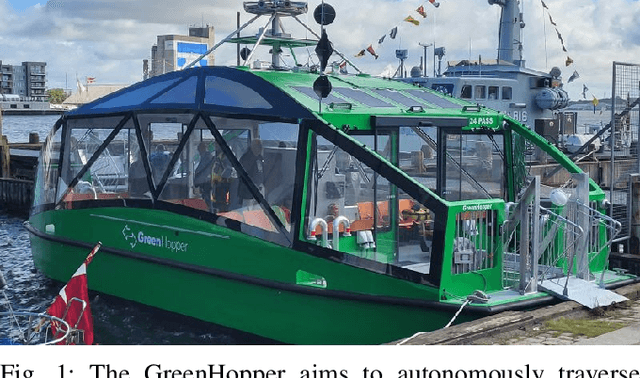

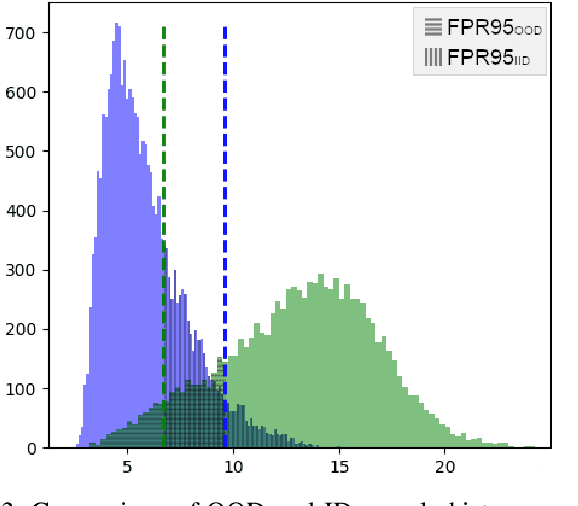
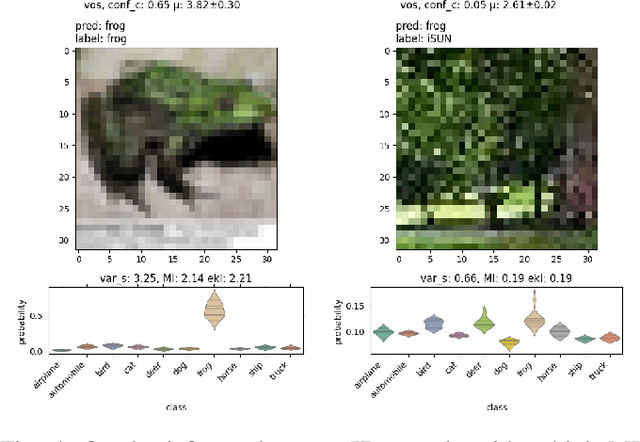
Abstract:We explore the use of uncertainty estimation in the maritime domain, showing the efficacy on toy datasets (CIFAR10) and proving it on an in-house dataset, SHIPS. We present a method joining the intra-class uncertainty achieved using Monte Carlo Dropout, with recent discoveries in the field of outlier detection, to gain more holistic uncertainty measures. We explore the relationship between the introduced uncertainty measures and examine how well they work on CIFAR10 and in a real-life setting. Our work improves the FPR95 by 8% compared to the current highest-performing work when the models are trained without out-of-distribution data. We increase the performance by 77% compared to a vanilla implementation of the Wide ResNet. We release the SHIPS dataset and show the effectiveness of our method by improving the FPR95 by 44.2% with respect to the baseline. Our approach is model agnostic, easy to implement, and often does not require model retraining.
Lightweight Monocular Depth Estimation through Guided Decoding
Mar 08, 2022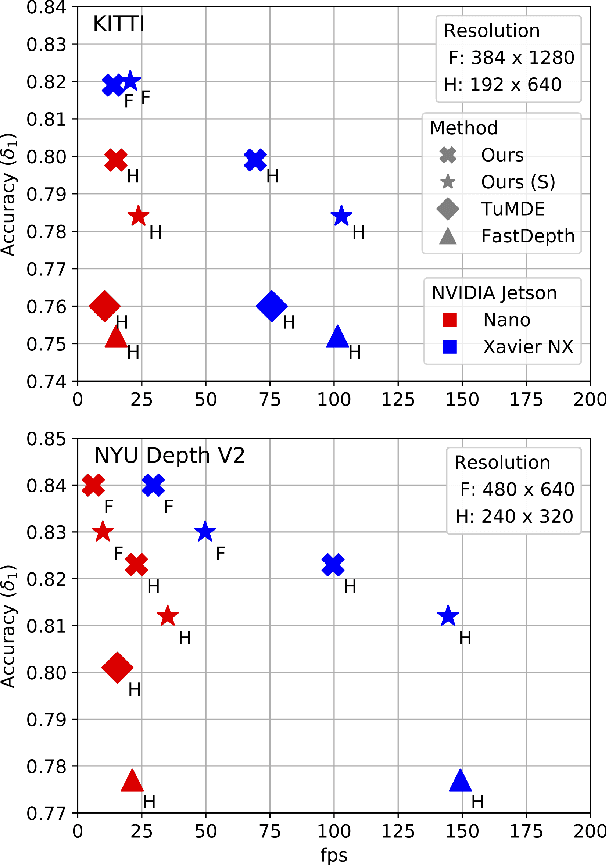
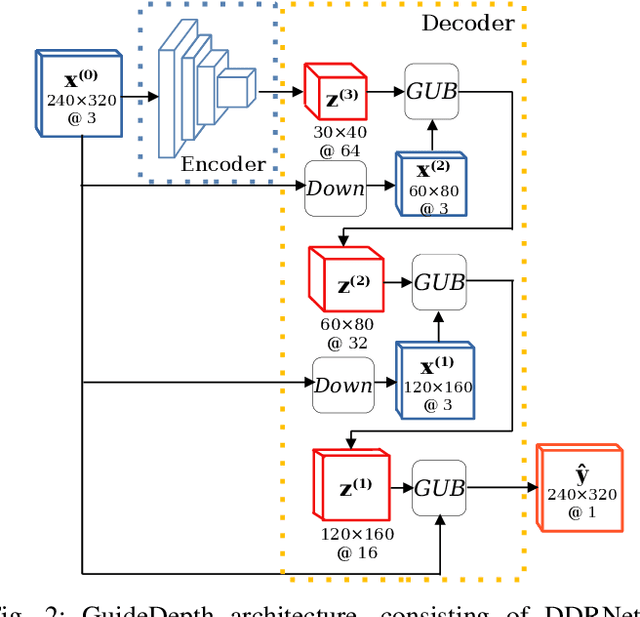


Abstract:We present a lightweight encoder-decoder archi- tecture for monocular depth estimation, specifically designed for embedded platforms. Our main contribution is the Guided Upsampling Block (GUB) for building the decoder of our model. Motivated by the concept of guided image filtering, GUB relies on the image to guide the decoder on upsampling the feature representation and the depth map reconstruction, achieving high resolution results with fine-grained details. Based on multiple GUBs, our model outperforms the related methods on the NYU Depth V2 dataset in terms of accuracy while delivering up to 35.1 fps on the NVIDIA Jetson Nano and up to 144.5 fps on the NVIDIA Xavier NX. Similarly, on the KITTI dataset, inference is possible with up to 23.7 fps on the Jetson Nano and 102.9 fps on the Xavier NX. Our code and models are made publicly available.
Visual Domain Adaptation for Monocular Depth Estimation on Resource-Constrained Hardware
Aug 05, 2021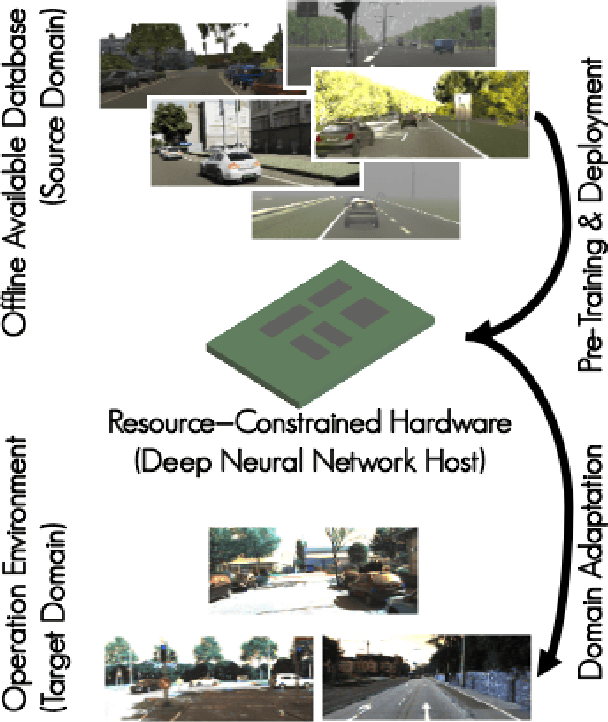

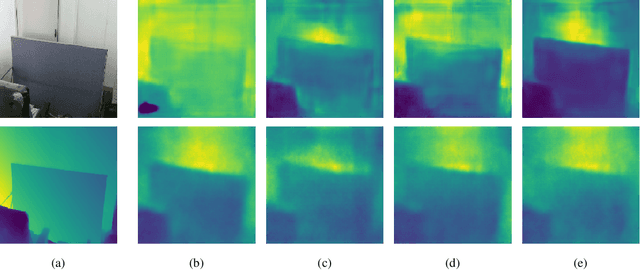

Abstract:Real-world perception systems in many cases build on hardware with limited resources to adhere to cost and power limitations of their carrying system. Deploying deep neural networks on resource-constrained hardware became possible with model compression techniques, as well as efficient and hardware-aware architecture design. However, model adaptation is additionally required due to the diverse operation environments. In this work, we address the problem of training deep neural networks on resource-constrained hardware in the context of visual domain adaptation. We select the task of monocular depth estimation where our goal is to transform a pre-trained model to the target's domain data. While the source domain includes labels, we assume an unlabelled target domain, as it happens in real-world applications. Then, we present an adversarial learning approach that is adapted for training on the device with limited resources. Since visual domain adaptation, i.e. neural network training, has not been previously explored for resource-constrained hardware, we present the first feasibility study for image-based depth estimation. Our experiments show that visual domain adaptation is relevant only for efficient network architectures and training sets at the order of a few hundred samples. Models and code are publicly available.
 Add to Chrome
Add to Chrome Add to Firefox
Add to Firefox Add to Edge
Add to Edge